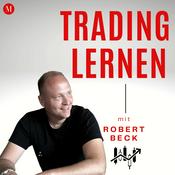Verfügbare Folgen
5 von 488
- The Hydrogen Podcast: The Final Episode — 5 Years of Lessons, Breakthroughs, and the Road AheadToday marks the end of an incredible chapter. After five years, The Hydrogen Podcast signs off with one final episode—a deep reflection on the lessons, people, and progress that defined half a decade of global hydrogen evolution.From the early policy excitement to the hard economics of project delivery, host Paul Rodden takes listeners through the milestones, the missteps, and the breakthroughs that shaped both the show and the hydrogen market itself.💬 In This Episode:The Early Days: Exploring the EU’s hydrogen strategy, U.S. hub proposals, and the rise of the color debate—gray, blue, and green.The Turning Point: Real stories from innovators, engineers, and policy makers who took hydrogen from headlines to megawatts.Market Reality: Why economics, not politics, ultimately determines which technologies survive.Breakthroughs and Lessons: From Plug Power’s 99.7% uptime to Raven SR’s waste-to-hydrogen plant in California, the data proves resilience pays off.Community Impact: Thousands of listeners—engineers, developers, and investors—who built this podcast into a movement.🔥 Final Spotlight — Raven SR: A company featured in our very first season now achieves a global milestone:First organic waste-to-hydrogen facility in California.2,400 metric tons of renewable hydrogen annually.7,200 metric tons of CO₂ emissions avoided.$75M in private equity funding, including Chevron and Samsung Ventures.Modular, water-free design—proof of scalable, decentralized hydrogen solutions.💡 Key Takeaways from Five Years: • Never abandon economics — bankable offtake makes or breaks projects. • Avoid dogma — flexibility in technology wins the long game. • Policy can accelerate, not replace, sound business. • Perseverance and collaboration drive real-world change.🎧 Paul’s Final Words:“We’ve been through every market cycle, every policy wave, and every breakthrough together. Hydrogen remains the future—but only if we build it with realism, discipline, and faith in each other. Thank you for five incredible years.”Support the show--------8:22
- Plug Power’s Pivot, NEOM’s Progress, and China’s Massive Hydrogen RoadmapIn this week’s episode of The Hydrogen Podcast, Paul Rodden explores three major stories that define hydrogen’s next phase — profit discipline, integrated scale, and global ambition.💼 1️⃣ Plug Power’s Financial Pivot Plug Power just delivered its most revealing investor call yet. While revenue missed expectations, the company beat earnings estimates and unveiled a bold new strategy:$275 million capital unlocked via asset sales and cash optimization.A decisive shift toward profitable, high-return projects like data center backup power.Suspension of DOE loan participation to focus on cash-positive commercial ventures.The message: No more growth for growth’s sake. Plug is entering the “profit-first” era of hydrogen — and signaling to the entire industry that bankability matters more than buzz.🏗️ 2️⃣ NEOM’s Hydrogen Superproject Saudi Arabia’s NEOM Green Hydrogen Company reached key construction and deployment milestones. NEOM’s integrated design — renewable power, electrolysis, ammonia synthesis, and export logistics — has become the blueprint for global hydrogen economics. Its advantage:Gigawatt-scale electrolysis with dedicated renewables.Vertical integration cutting cost and risk.Export-ready ammonia positioning Saudi Arabia as a hydrogen powerhouse.For investors and policymakers, the lesson is simple: scale, integration, and cost optimization are non-negotiable if you want hydrogen to compete with fossil fuels.🇨🇳 3️⃣ China’s Hydrogen Technology Roadmap 3.0 China’s new national plan aims for 4 million hydrogen vehicles by 2040 and a massive expansion of refueling and distribution infrastructure. The country’s approach blends state-backed coordination with competitive economics, just as it did for solar, wind, and EV batteries. Key elements include:Large-scale renewable electrolysis capacity expansion.Centralized hydrogen logistics and refueling hubs.Targeted deployment in commercial transport and industry.But success depends on economic realism—matching every gigawatt of electrolyzer capacity with credible demand and cost-reduction pathways.⚙️ The Common Thread: Across these three global stories, hydrogen’s future is being shaped by economic maturity.Plug Power shows that capital efficiency is survival.NEOM proves that scale and integration drive competitiveness.China demonstrates that ambition must be paired with economics.💬 Paul’s Take: “The hydrogen industry has hit its inflection point. From now on, success isn’t about pilots or politics—it’s about profits, integration, and delivery.”Support the show--------6:57
- Hydrogen’s Real-World Wins — Ohio, Denmark & Solar-Powered Drones Leading the WayIn this episode of The Hydrogen Podcast, Paul Rodden highlights three powerful stories proving that hydrogen’s progress is driven by innovation, economics, and real-world execution. From the U.S. Midwest to Northern Europe to high-tech drone applications, the hydrogen industry is showing tangible momentum.🇺🇸 Ohio’s Hydrogen Grit Even as federal hydrogen funding faces political turbulence, Ohio’s hydrogen economy keeps expanding. At the Ohio Fuel Cell and Hydrogen Coalition, Bill Whittenberger made it clear: “We’re building businesses in this state regardless.” Key players include:American Electric Power (AEP) partnering with Bloom Energy for 1 GW of fuel cells to power data centers.Honda continuing its Marysville fuel cell vehicle production and exploring hydrogen’s role in shipping and aviation.Independence Hydrogen leveraging industrial byproducts from INEOS for hydrogen purification and compression. Ohio’s story shows hydrogen’s business case is alive—rooted in industrial resilience, local demand, and speed to market.🇩🇰 Denmark’s HySynergy Plant – A European Milestone Europe’s hydrogen ambitions are moving from theory to practice. The HySynergy project in Fredericia—powered entirely by solar and wind—now produces eight tonnes of hydrogen daily. This 20 MW facility, operated by Everfuel, links hydrogen directly to refinery operations and cross-border exports to Germany. Though delayed and still challenged by high electricity costs, HySynergy proves scalability is within reach. CEO Jakob Korsgaard urges strong implementation of the EU RED III directive to hit Europe’s 2030 renewables targets. The result: a genuine step toward low-carbon hydrogen at commercial scale.🚀 Solar Hydrogen Nanogrids – Powering Drones and Beyond Michigan-based Sesame Solar has unveiled a game-changing solar-hydrogen nanogrid, capable of generating hydrogen on-site—anywhere, anytime. How it works:Draws water from the air.Uses solar power for electrolysis.Stores hydrogen safely in metal hydrides, enabling months-long storage. This portable nanogrid powers long-endurance drones like Heven AeroTech’s Z1, supporting missions for defense, disaster response, and remote industries. No fuel deliveries. No diesel logistics. Just clean, deployable hydrogen in minutes.💡 The Bigger Picture: Hydrogen’s success depends on smart economics and flexible deployment.Ohio demonstrates bottom-up market resilience.Denmark proves policy-driven scale-up is achievable.Sesame Solar shows innovation can bypass infrastructure bottlenecks.From heavy industry to autonomous tech, hydrogen’s value is being earned through performance, not promises.Support the show--------10:51
- Germany’s Hydrogen Reality Check — What the Audit Really Means for the Global MarketIn today’s episode of The Hydrogen Podcast, Paul Rodden breaks down the German Federal Court of Auditors’ explosive new report calling for a “reality check” on Germany’s national hydrogen strategy. This assessment isn’t just about Germany—it’s a warning and a roadmap for every country investing billions in clean hydrogen.🇩🇪 The Stakes: Germany has pledged over €7 billion for 2024–2025 to build a world-class hydrogen economy—funding green hydrogen production, imports, pipelines, and industrial demand. But according to auditors, the ramp-up “is not going according to plan.” The country risks missing its 2030 hydrogen targets, facing lagging demand, stalled projects, and unsustainable subsidy exposure.💡 Key Findings:Subsidies vs. Market Signals: Germany risks permanent state dependency if subsidies don’t taper as costs fall.Demand Gap: Too few anchor buyers in steel, chemicals, and power generation to justify large-scale infrastructure.Infrastructure Overbuild: Billions could go toward pipelines and terminals with no guaranteed customers.Fiscal Risk: Import costs for hydrogen and derivatives could hit €25 billion annually by 2030.📊 The “Reality Check” Playbook: Germany’s auditors aren’t anti-hydrogen—they’re urging smarter economics. ✅ Align supply with real industrial demand through contracts and quotas. ✅ Prioritize modular, “no regrets” infrastructure tied to offtake commitments. ✅ Focus subsidies on cost-down innovations with clear sunset provisions. ✅ Accelerate certification, traceability, and international standards for clean hydrogen trade. ✅ Develop a Plan B—invest in CCS, flexible renewables, and alternative decarbonization tools if costs stay high.🌍 Global Implications: Germany’s audit matters because its policy blueprint drives Europe’s hydrogen agenda. How Berlin recalibrates—balancing ambition with financial realism—will influence how investors, developers, and policymakers shape hydrogen markets worldwide.🚀 The Opportunity: If Germany gets this right, it will build a smarter, more competitive hydrogen ecosystem, pairing industrial leadership with disciplined market design. The key isn’t less ambition—it’s better economics.💬 My Take: “This report isn’t a red light for hydrogen—it’s a flashing yellow. It’s time for smarter incentives, flexible contracting, and demand-led infrastructure. Germany’s course correction could set the global gold standard for a sustainable hydrogen economy.”Support the show--------9:17
- Inside the Deals Powering Hydrogen — The Truth About Offtake AgreementsIn this episode of The Hydrogen Podcast, we dive into the real mechanics of the hydrogen economy — not the hype, but the contracts that make it all work. Drawing on the latest data from the August 2025 Oxford Institute for Energy Studies report, Paul Rodden breaks down how offtake agreements are defining the future of hydrogen finance, investment, and market credibility.📄 What You’ll Learn: 💼 What are hydrogen offtake agreements (H2SPAs)?The backbone of every bankable hydrogen project.How these long-term contracts (10–15 years) guarantee sales, unlock capital, and stabilize project economics.🌍 Who’s Signing the Big Deals?ExxonMobil & Marubeni: 250,000 tonnes per year of near-zero carbon ammonia.RWE & TotalEnergies: 15-year, 30,000-tonne annual green hydrogen contract.Fertiglobe (Egypt): €397M, 20-year term – a major global benchmark.ACME & Yara (India): World’s largest green ammonia supply agreement.⚖️ How These Contracts Are Structured:Shorter tenors than LNG (10–15 years vs. 20+) to allow for cost improvements.Pricing models vary: fixed, cost-plus, or hybrid, often tied to electricity or natural gas indices.Volume guarantees with take-or-pay clauses (60–80% typical), providing bankability while allowing flexibility.🧩 Risks, Rewards, and Regulation:Contracts hinge on policy support, tax credits, and certification.Deals must account for change in law, subsidy revisions, and force majeure events unique to hydrogen.Certification and guarantees of origin now determine premium pricing and eligibility for incentives.🚢 Delivery & Logistics:Pipelines for local markets; ammonia and LH₂ shipping for international trade.Complex risk-sharing defined through Incoterms like DES and FOB.📊 The Future of Offtake Markets:2020s: Foundational contracts with heavy state support.2030s: More flexible, diversified structures and shorter tenors.2040s: Global liquidity, price benchmarks, and trading instruments akin to LNG.💡 Why It Matters: Every hydrogen contract signed today pushes the industry closer to commercial maturity. These agreements are the link between vision and value—transforming hydrogen from a political promise into a financial reality.📈 Takeaway: Hydrogen’s next chapter won’t be written in policy memos—it’ll be written in binding offtake agreements. Those who master this contract landscape will control the pace and profitability of the global hydrogen transition.Support the show--------11:31
Weitere Wirtschaft Podcasts
Trending Wirtschaft Podcasts
Über The Hydrogen Podcast
Welcome to The Hydrogen Podcast! This show is for energy investors and analysts who want to learn about how hydrogen is driving the evolution of energy. We will drill down into the hydrogen market and discuss where capital is being deployed and where financial opportunities are developing. Learn from Paul Rodden, the hydrogen consulting expert that is on the speed dial of billionaire oil magnates and is dialed in to the advances and financial opportunities that hydrogen presents in the energy market. Inside each episode, Paul interviews thought leaders who are invested in the future of energy and driving the hydrogen market to new heights. He also shares his insights on the current opportunities and developments with complete transparency. From overall strategy, to future casting, to lessons learned, Paul will be your guide as you explore the concept of hydrogen as a fuel source, the advancements in the industry (present and future), and the economic opportunities that are available for potential investors.
Podcast-WebsiteHöre The Hydrogen Podcast, Wall Street mit Markus Koch - featured by Handelsblatt und viele andere Podcasts aus aller Welt mit der radio.de-App

Hol dir die kostenlose radio.de App
- Sender und Podcasts favorisieren
- Streamen via Wifi oder Bluetooth
- Unterstützt Carplay & Android Auto
- viele weitere App Funktionen
Hol dir die kostenlose radio.de App
- Sender und Podcasts favorisieren
- Streamen via Wifi oder Bluetooth
- Unterstützt Carplay & Android Auto
- viele weitere App Funktionen


The Hydrogen Podcast
Code scannen,
App laden,
loshören.
App laden,
loshören.







































